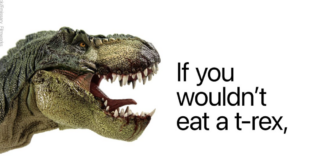Palaeontologists in Utah said they had found the fossil of a previously unknown dinosaur – a strange horned creature which roamed an island continent known as Laramidia.
AFP
July 17, 2013

Dubbed Nasutoceratops titusi, the creature lived during the Late Cretaceous about 76 million years ago.
It belonged to the family of herbivore ceratops dinos, of which the famous triple-horned triceratops was a member.
N. titusi is “remarkable” even for a ceratops, according to the researchers.
Its skull – uncovered nearly intact – comprised an oversized snout, extraordinarily long, blade-like horns that pitched forward over the eyes, and a trademark bony frill at the base of the head.
From horntip to tailtip, it was about four metres (14 feet) long.
All ceratopsids have greatly enlarged nose regions, but Nasutoceratops is a champion.
Why, though, is unclear.
“The jumbo-sized schnoz of Nasutoceratops likely had nothing to do with a heightened sense of smell, since olfactory receptors occur further back in the head, adjacent to the brain,” said Scott Sampson of the University of Utah.
“The function of this bizarre feature remains uncertain.”
His colleague, Mark Loewen, said the dino’s “amazing horns” “were most likely used as visual signals of dominance and, when that wasn’t enough, as weapons for combatting rivals.”
The evidence provides more tantalising details about a 27-million-year spell in the Late Cretaceous when high temperatures melted global icecaps and forced up sea levels, says the study.
The ocean spilled into central North America, leaving two big landmasses riding above a warm, shallow sea.
 Daily Stormer The Most Censored Publication in History
Daily Stormer The Most Censored Publication in History


